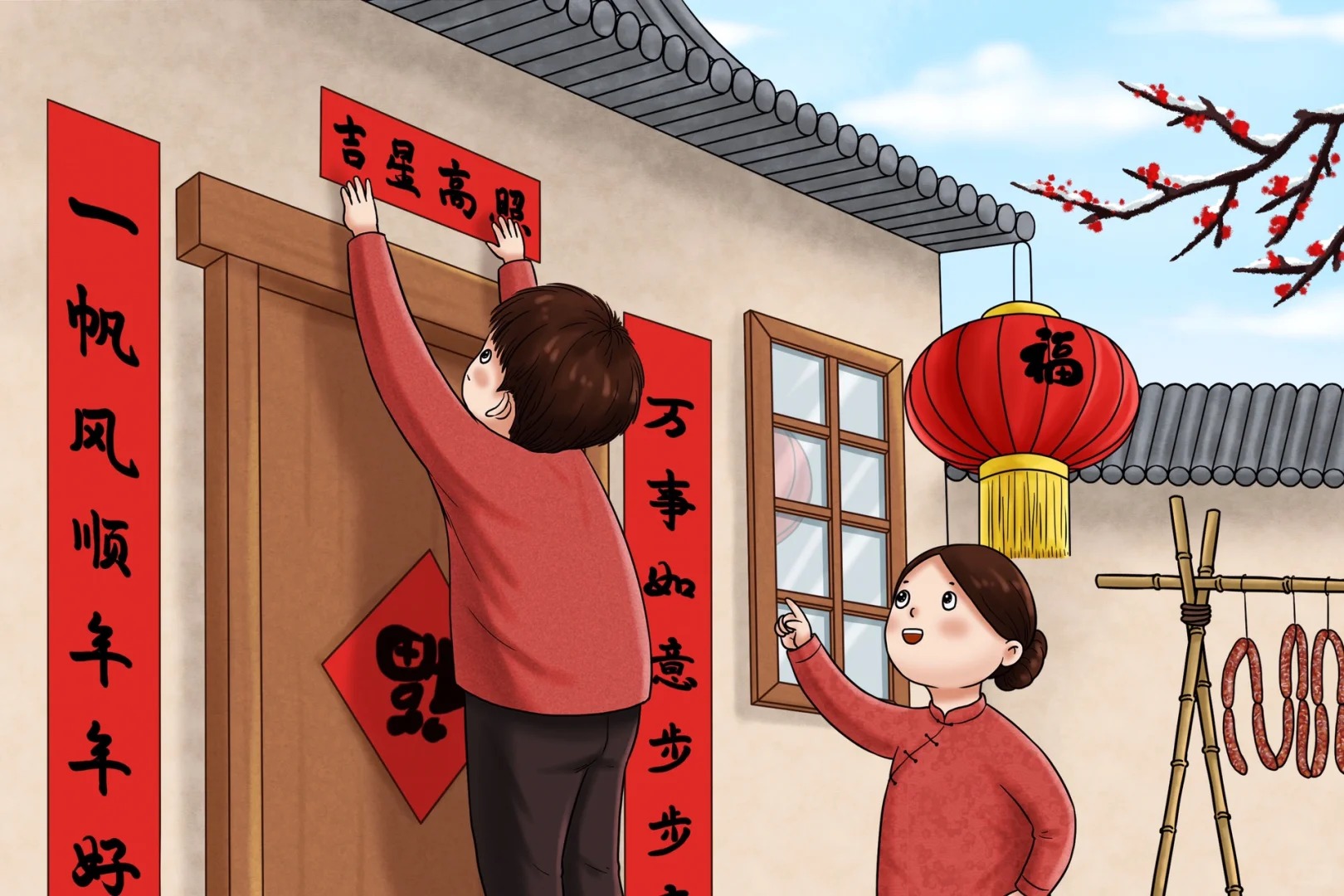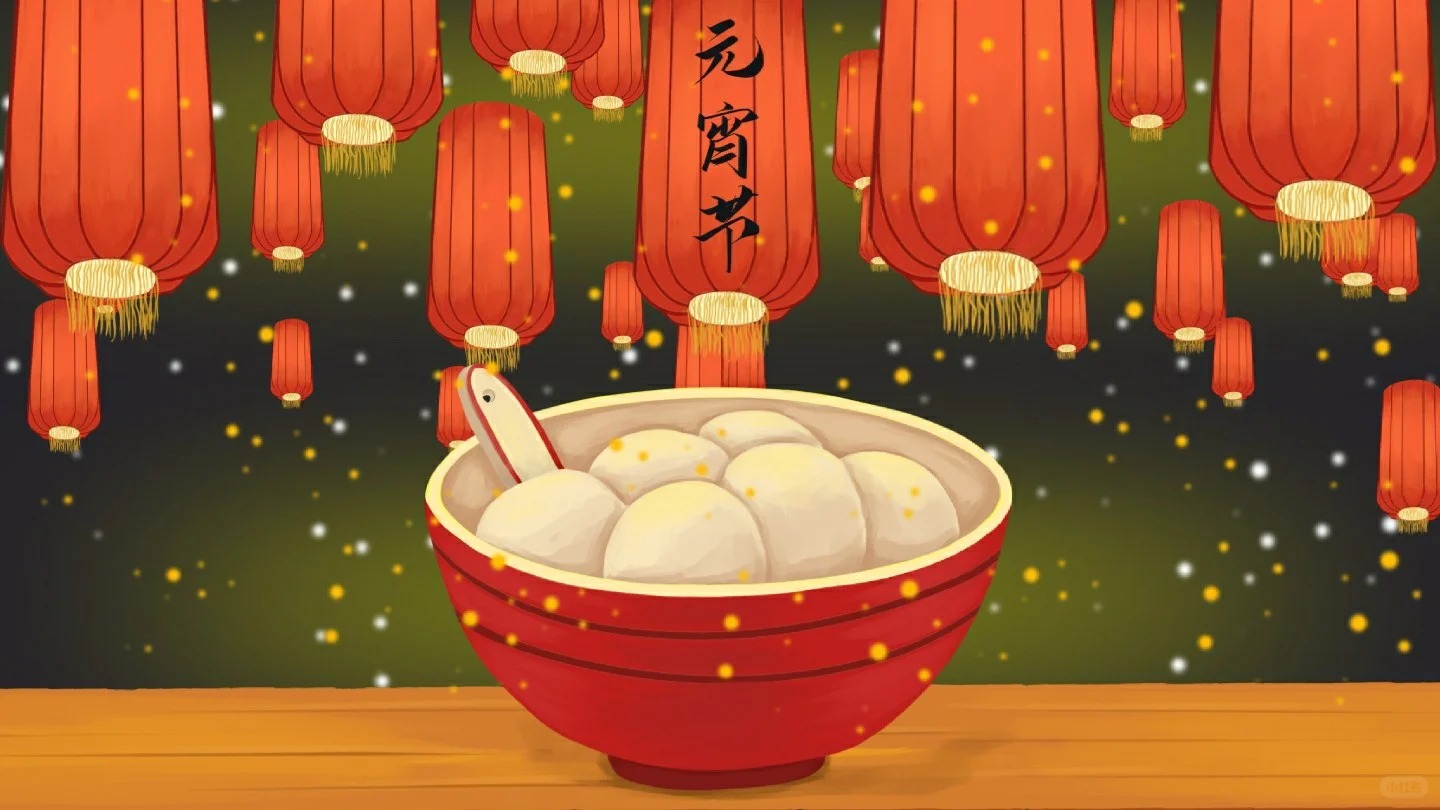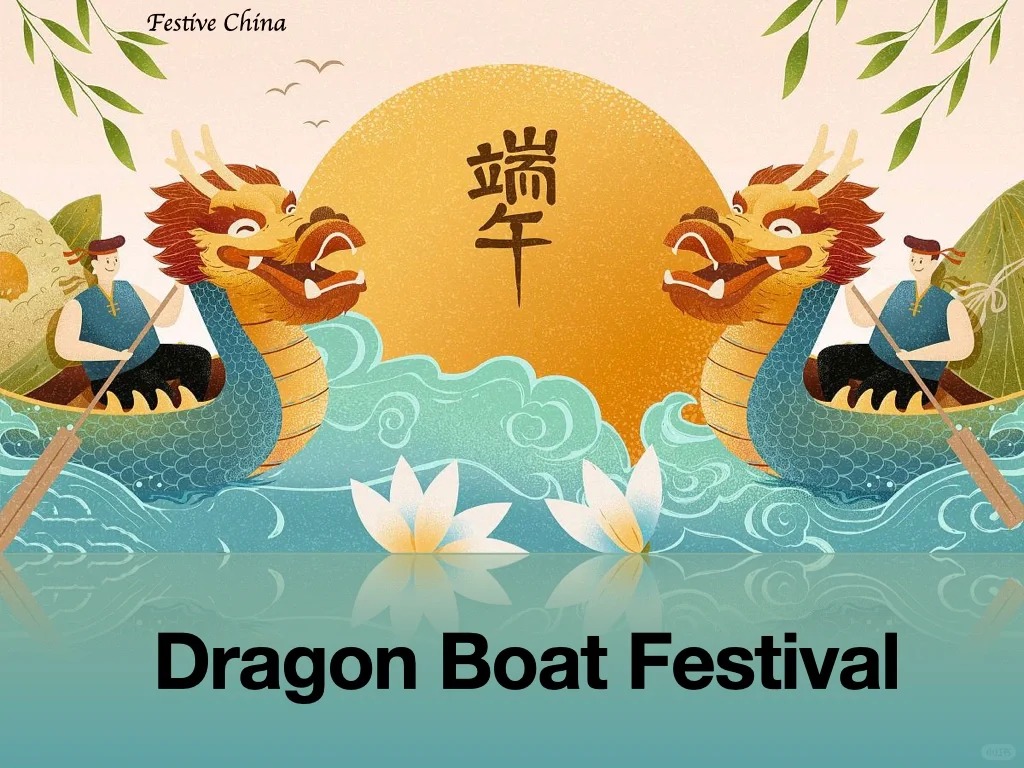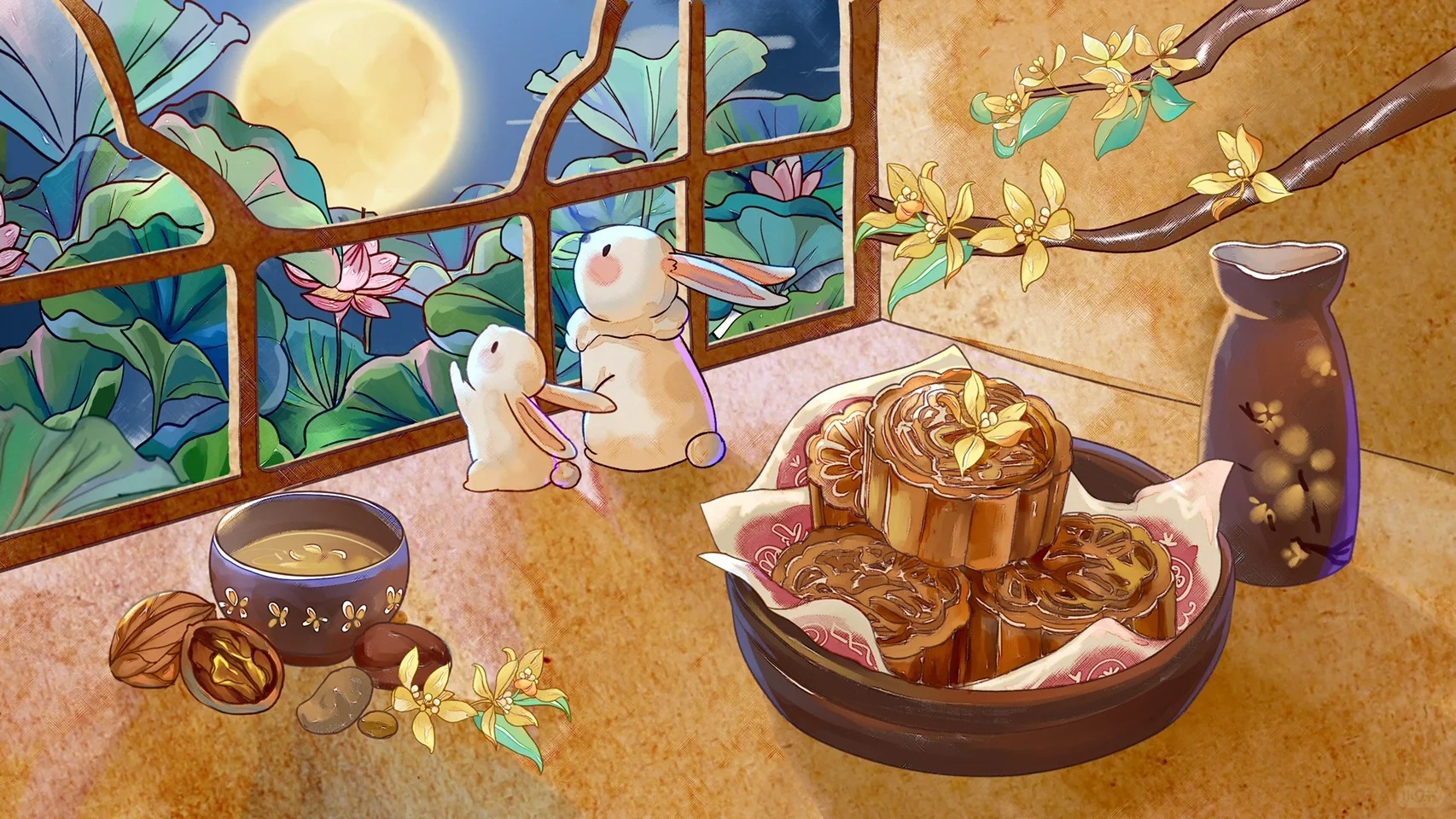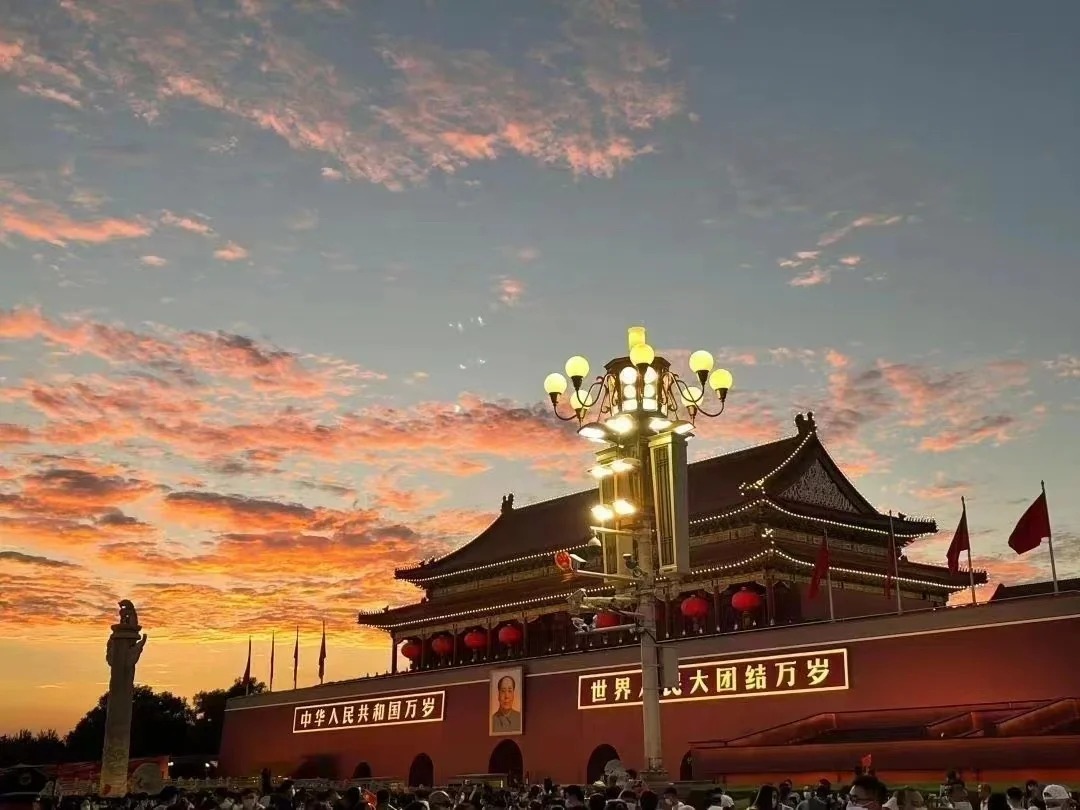Spring Festival (Chinese New Year)
| Holiday Date | January 29, 2025 (Date may vary based on lunar calendar) |
|---|
Celebrations:
- Family Reunion Dinner (年夜饭): On New Year’s Eve, families gather for a lavish feast symbolizing unity and prosperity. This meal often includes dishes with auspicious meanings, such as fish (symbolizing abundance) and dumplings (representing wealth).
- Fireworks and Firecrackers: At midnight, the sky lights up with dazzling fireworks displays, while firecrackers are set off to ward off evil spirits and bring good luck for the coming year. This tradition, though restricted in some urban areas due to safety concerns, remains an integral part of the celebration in many regions.
Traditions:
- Red Envelopes (红包): Elders give red envelopes containing money to children and unmarried adults. This gesture symbolizes good luck and is believed to ward off evil spirits. In recent years, digital red envelopes have also become popular, especially through WeChat and other online platforms.
- House Cleaning (大扫除): Before the New Year, families thoroughly clean their homes to sweep away bad luck and make way for good fortune. This cleaning is typically done before New Year’s Eve, as it’s considered unlucky to clean on the first day of the New Year.
Festive Foods:
- Dumplings (饺子): These crescent-shaped parcels of dough filled with meat and vegetables are a staple of Northern Chinese New Year celebrations. They symbolize wealth due to their resemblance to ancient Chinese gold ingots. Families often gather to make dumplings together, sometimes hiding a coin in one for extra luck.
- Niangao (年糕): This sticky rice cake is a popular treat during the Spring Festival, especially in Southern China. The name sounds similar to “higher year,” symbolizing progress and advancement in the coming year. It can be prepared in various ways, either sweet or savory, and is often given as a gift.
Lantern Festival
| Holiday Date | February 17, 2025 (15th day of the first lunar month) |
|---|
Celebrations:
- Lantern Displays: Cities and towns across China set up elaborate lantern displays, often depicting scenes from Chinese folklore or zodiac animals. These displays can be incredibly intricate and are a major attraction during the festival.
- Lion and Dragon Dances: Performers dressed in lion or dragon costumes dance through the streets to the rhythm of drums and cymbals. These dances are believed to bring good luck and ward off evil spirits.
Traditions:
- Lantern Riddles: People write riddles on lanterns or small strips of paper attached to the lanterns. Passersby try to solve these riddles, often with small prizes for correct answers. This tradition combines intellectual challenge with festive fun.
- Releasing Sky Lanterns: In some areas, people release sky lanterns, writing their wishes for the new year on the lanterns before setting them afloat. This creates a beautiful spectacle of lights rising into the night sky.
Festive Foods:
- Tangyuan (汤圆): These glutinous rice balls are the quintessential food of the Lantern Festival. They are typically filled with sweet paste made from black sesame, red bean, or peanuts, and served in a sweet soup. The round shape of tangyuan symbolizes family reunion and completeness.
- Yuanxiao (元宵): Similar to tangyuan but made differently, yuanxiao are also glutinous rice balls. They are more common in northern China and are made by rolling the filling in glutinous rice flour. The name “yuanxiao” is also used to refer to the Lantern Festival itself in some regions.
Tomb Sweeping Day (Qingming Festival)
| Holiday Date | April 5, 2025 |
|---|
Celebrations:
- Ancestor Worship: Families visit the graves of their ancestors to clean the burial sites, offer food and drinks, and burn incense and joss paper. This act of filial piety is central to the festival and reinforces family bonds across generations.
- Spring Outings: As Qingming typically falls in early April when the weather is becoming warmer, many people take the opportunity to enjoy nature and go on spring outings. This tradition is known as 踏青 (tà qīng), which literally means “treading on the greenery”.
Traditions:
- Kite Flying: People fly kites during the day and into the evening. Some write messages or tie small lanterns to the kites, then cut the string to release them, symbolically sending prayers and wishes to their ancestors in the sky.
- Willow Branch Wearing: In some regions, people wear willow branches on their heads or pin them to their clothes. This custom is believed to ward off evil spirits and pay respect to the dead.
Festive Foods:
- Qingtuan (青团): These green, sticky rice balls are a traditional Qingming food, especially popular in the Jiangnan region. The green color comes from wormwood juice or barley grass, which is mixed with glutinous rice flour. They are often filled with sweet bean paste and symbolize the renewal of nature in spring.
- Eggs: Hard-boiled eggs are often brought to grave sites as offerings. In some areas, people dye the eggs in various colors before offering them, creating a visually striking display.
Dragon Boat Festival
| Holiday Date | June 2, 2025 (Date may vary based on lunar calendar) |
|---|
Celebrations:
- Dragon Boat Races: Communities gather near rivers and lakes to watch teams compete in rowing long, narrow boats adorned with dragon heads and tails. These races commemorate the search for the body of Qu Yuan, a patriotic poet who drowned himself in the Miluo River.
Traditions:
- Hanging Calamus and Wormwood: People hang bunches of aromatic calamus and wormwood on their doors to ward off evil spirits and illness. This practice is rooted in traditional Chinese medicine and the belief in the protective properties of these plants.
Festive Foods:
- Zongzi (粽子): These pyramid-shaped dumplings made of glutinous rice wrapped in bamboo or reed leaves are the quintessential food of the Dragon Boat Festival. They can be filled with various ingredients such as pork, chestnuts, or red bean paste. Legend says they were thrown into the river to feed Qu Yuan’s spirit and prevent fish from eating his body.
Mid-Autumn Festival
| Holiday Date | September 22, 2025 (Date may vary based on lunar calendar) |
|---|
Celebrations:
- Moon Gazing: Families and friends gather outdoors to admire the full moon, which is said to be at its brightest and fullest on this day. This tradition is often accompanied by poetry recitation and storytelling, particularly the legend of Chang’e, the Moon Goddess.
Traditions:
- Lantern Lighting: Colorful lanterns are hung in homes and public spaces, creating a festive atmosphere. In some regions, people write riddles on lanterns for others to guess, adding an element of intellectual entertainment to the celebrations.
Festive Foods:
- Mooncakes (月饼): These round pastries symbolize family reunion and are the most iconic food of the Mid-Autumn Festival. Traditional mooncakes have a thin crust with dense, sweet fillings such as lotus seed paste or red bean paste, often with salted egg yolks in the center representing the full moon. In recent years, innovative flavors and designs have also become popular.
National Day (Golden Week)
| Holiday Date | October 1-7, 2025 |
|---|
Celebrations:
- Flag Raising Ceremony: A grand flag-raising ceremony is held in Tiananmen Square in Beijing, attended by thousands of people. Similar ceremonies are held in other cities across China, symbolizing national pride and unity.
- Fireworks Displays: Many cities organize spectacular fireworks shows, particularly on the evening of October 1st. These dazzling displays light up the night sky, creating a festive atmosphere and attracting large crowds.
Traditions:
- Mass Tourism: The week-long holiday sees millions of Chinese people traveling domestically and internationally. Popular destinations include historical sites, scenic spots, and major cities. This massive movement of people, known as “人山人海” (rén shān rén hǎi, literally “people mountain people sea”), is a unique characteristic of the Golden Week.
- Patriotic Education: Many schools and workplaces organize activities to promote patriotism and national pride. These may include watching patriotic films, visiting museums, or participating in group discussions about Chinese history and culture.
Festive Foods:
- Moon Cakes: Although primarily associated with the Mid-Autumn Festival, moon cakes are often still enjoyed during the National Day holiday, especially if it falls close to the Mid-Autumn Festival. Many people give moon cakes as gifts to friends and family during this time.
- Regional Specialties: As people travel across the country, trying local specialties becomes a part of the celebration. For example, visitors to Beijing might enjoy Peking duck, while those in Sichuan might sample spicy hotpot.


